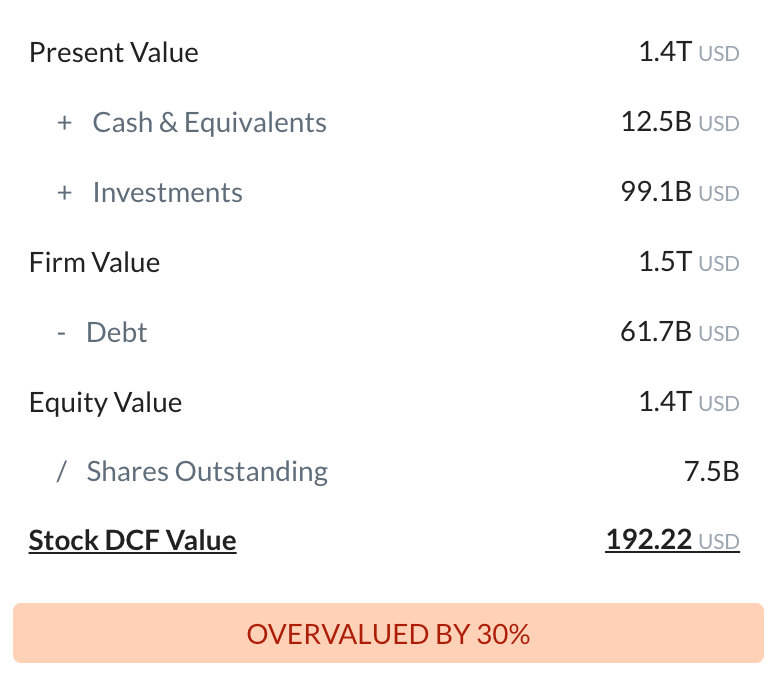
Johnson & Johnson
NYSE:JNJ

Intrinsic Value
The intrinsic value of one
 JNJ
stock under the Base Case scenario is
hidden
USD.
Compared to the current market price of 157.47 USD,
Johnson & Johnson
is
hidden
.
JNJ
stock under the Base Case scenario is
hidden
USD.
Compared to the current market price of 157.47 USD,
Johnson & Johnson
is
hidden
.
The Intrinsic Value is calculated as the average of DCF and Relative values:
Valuation History
Johnson & Johnson

Fundamental Analysis

Continued legal challenges, especially around talc-based products and opioid-related lawsuits, could result in substantial settlement costs and negatively impact Johnson & Johnson’s reputation and cash flow.
Its diversified portfolio across pharmaceuticals, medical devices, and consumer health products insulates Johnson & Johnson from downturns in any single category, supporting stable revenue and cash generation.

Revenue & Expenses Breakdown
Johnson & Johnson

Balance Sheet Decomposition
Johnson & Johnson

| Current Assets | 55.9B |
| Cash & Short-Term Investments | 24.5B |
| Receivables | 14.8B |
| Other Current Assets | 16.5B |
| Non-Current Assets | 124.2B |
| Long-Term Investments | 451m |
| PP&E | 21.6B |
| Intangibles | 81.8B |
| Other Non-Current Assets | 20.3B |
Free Cash Flow Analysis
Johnson & Johnson

| USD | |
| Free Cash Flow | USD |
Earnings Waterfall
Johnson & Johnson

|
Revenue
|
89.3B
USD
|
|
Cost of Revenue
|
-28.2B
USD
|
|
Gross Profit
|
61.1B
USD
|
|
Operating Expenses
|
-37.6B
USD
|
|
Operating Income
|
23.5B
USD
|
|
Other Expenses
|
-1.7B
USD
|
|
Net Income
|
21.8B
USD
|
JNJ Profitability Score
Profitability Due Diligence

Johnson & Johnson's profitability score is hidden . The higher the profitability score, the more profitable the company is.

Score
Johnson & Johnson's profitability score is hidden . The higher the profitability score, the more profitable the company is.
JNJ Solvency Score
Solvency Due Diligence

Johnson & Johnson's solvency score is hidden . The higher the solvency score, the more solvent the company is.

Score
Johnson & Johnson's solvency score is hidden . The higher the solvency score, the more solvent the company is.
Wall St
Price Targets
JNJ Price Targets Summary
Johnson & Johnson

According to Wall Street analysts, the average 1-year price target for
 JNJ
is 173 USD
with a low forecast of 151.5 USD and a high forecast of 199.5 USD.
JNJ
is 173 USD
with a low forecast of 151.5 USD and a high forecast of 199.5 USD.
Dividends
Current shareholder yield for  JNJ is
hidden
.
JNJ is
hidden
.
Shareholder yield represents the total return a company provides to its shareholders, calculated as the sum of dividend yield, buyback yield, and debt paydown yield. What is shareholder yield?
The intrinsic value of one
 JNJ
stock under the Base Case scenario is
hidden
USD.
JNJ
stock under the Base Case scenario is
hidden
USD.
Compared to the current market price of 157.47 USD,
 Johnson & Johnson
is
hidden
.
Johnson & Johnson
is
hidden
.


























































 You don't have any saved screeners yet
You don't have any saved screeners yet